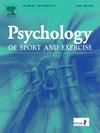迈向运动员表现发展的差异化模型(DMAPD):初步版本和测试基于德国样本代表六个运动。
IF 3.3
2区 心理学
Q2 HOSPITALITY, LEISURE, SPORT & TOURISM
引用次数: 0
摘要
什么时候是开始竞争的最佳时机?年轻运动员是应该尝试多种运动,还是应该尽早专攻?尽管存在持续的争论,但文献缺乏建立和测试综合现有知识,测试传统假设和探索新假设的简约模型的努力。本研究通过引入和测试一个初步的运动员表现发展差异模型(DMAPD)来解决这一差距,该模型提出了五个假设,涉及儿童早期的多功能性、运动类型、比赛开始年龄、运动抽样和运动生涯开始阶段取得的比赛成绩。我们分析了943名德国男性青年运动员的数据(t1:年龄= 8.03岁,SD = 0.59),涉及六个项目(足球、网球、乒乓球、越野滑雪、长跑、公路自行车),分为三种运动类型:入侵游戏、网络游戏和耐力运动,直到掌握运动生涯阶段的开始(Mfinal age = 20.06岁,SD = 0.69)。采用结构方程模型,特别是调节的中介分析来检验DMAPD。我们的研究结果表明,对于入侵游戏和网络游戏,早期的多功能性预示着更早的比赛开始,这与更高的比赛表现有关;在运动抽样和后来的表现之间没有发现显著的联系。相反,在耐力运动中,早期的多功能性并不能预测比赛开始时的年龄、运动抽样或后来的表现。相反,后来的比赛成绩只能通过运动抽样的程度来预测。这些发现鼓励进一步考虑DMAPD假设,并与最近呼吁在人才发展研究中考虑更多差异化、群体特异性和基于模型的因素相一致。本文章由计算机程序翻译,如有差异,请以英文原文为准。
Toward a Differentiated Model of Athlete Performance Development (DMAPD): Preliminary version and testing based on a German sample representing six sports
When is the right time to start competing? Should young athletes sample multiple sports or specialize early? Despite ongoing debate, the literature lacks efforts to build and test parsimonious models that synthesize existing knowledge, test traditional hypotheses, and explore new ones. This study addresses this gap by introducing and testing a preliminary Differentiated Model of Athlete Performance Development (DMAPD), which proposes five hypotheses linking early childhood versatility, type of sports, age at competition start, sports sampling, and later competition performance.
We analysed data from 943 German male youth athletes (t1: MAge = 8.03 years, SD = 0.59) across six sports (soccer, tennis, table tennis, cross-country skiing, long-distance running, road cycling), categorized into three sport types: invasion games, net games, and endurance sports, until the beginning of the mastery athletic career stage (Mfinal age = 20.06 years, SD = 0.69). Structural equation modeling, specifically moderated mediation analysis, was employed to test the DMAPD.
Our findings indicate that for invasion and net games, early versatility predicts an earlier start in competitions, which is associated with higher later competition performance; no significant link was found between sports sampling and later performance. Conversely, in endurance sports, early versatility did not predict age at competition start, sports sampling, or later performance. Instead, later competition performance was solely predicted by the extent of sports sampling.
These findings encourage further consideration of DMAPD hypotheses and align with recent calls for more differentiated, group-specific and model-based considerations in talent development research.
求助全文
通过发布文献求助,成功后即可免费获取论文全文。
去求助
来源期刊
CiteScore
6.40
自引率
5.90%
发文量
172
审稿时长
69 days
期刊介绍:
Psychology of Sport and Exercise is an international forum for scholarly reports in the psychology of sport and exercise, broadly defined. The journal is open to the use of diverse methodological approaches. Manuscripts that will be considered for publication will present results from high quality empirical research, systematic reviews, meta-analyses, commentaries concerning already published PSE papers or topics of general interest for PSE readers, protocol papers for trials, and reports of professional practice (which will need to demonstrate academic rigour and go beyond mere description). The CONSORT guidelines consort-statement need to be followed for protocol papers for trials; authors should present a flow diagramme and attach with their cover letter the CONSORT checklist. For meta-analysis, the PRISMA prisma-statement guidelines should be followed; authors should present a flow diagramme and attach with their cover letter the PRISMA checklist. For systematic reviews it is recommended that the PRISMA guidelines are followed, although it is not compulsory. Authors interested in submitting replications of published studies need to contact the Editors-in-Chief before they start their replication. We are not interested in manuscripts that aim to test the psychometric properties of an existing scale from English to another language, unless new validation methods are used which address previously unanswered research questions.

 求助内容:
求助内容: 应助结果提醒方式:
应助结果提醒方式:


